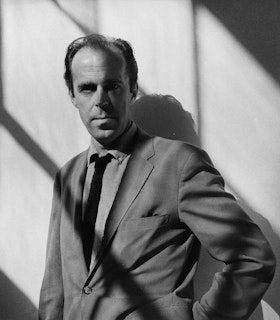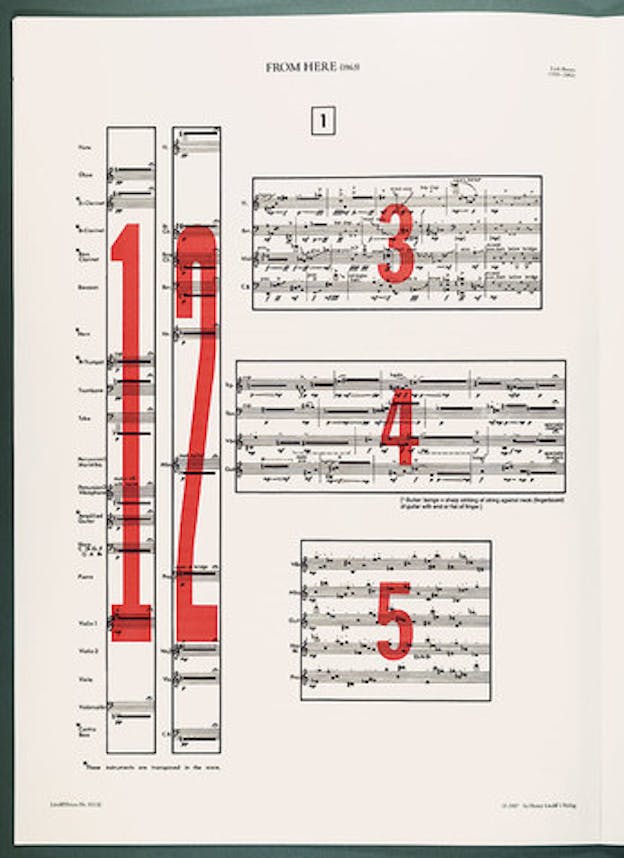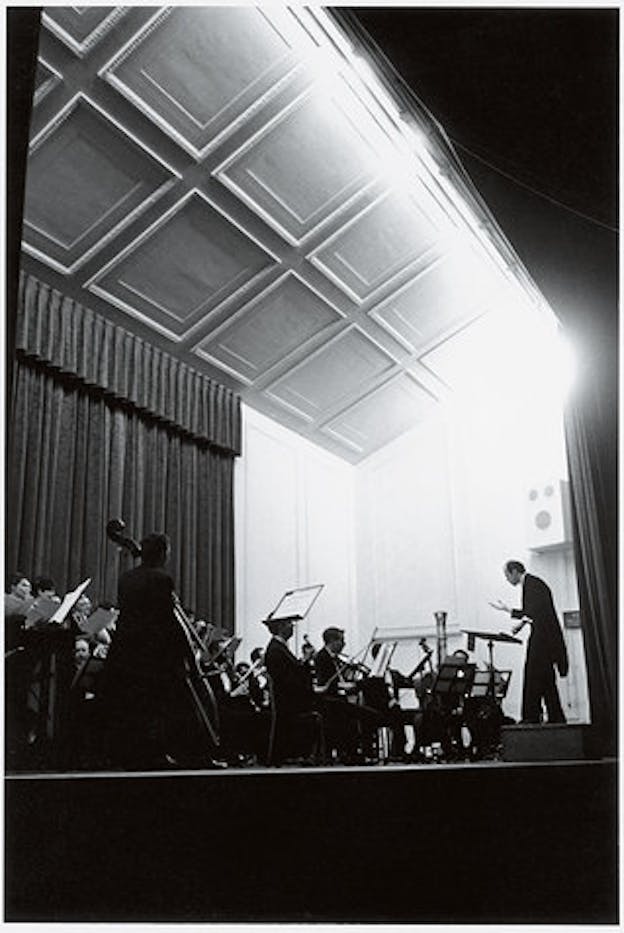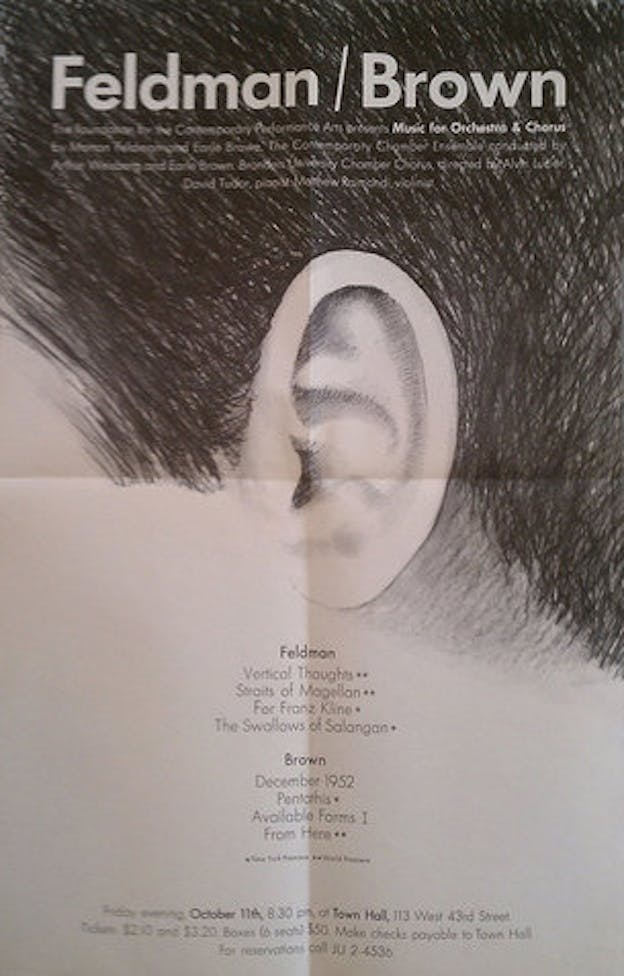Earle Brown

Artist Statement
Spontaneous decisions in the performance of a work and the possibility of the composed elements being "mobile" have been of primary interest to me for some time.
The mobility of the elements in my compositions—for example, in Twenty-Five Pages
(1953)—was inspired by the mobiles of Alexander Calder, in which, similar to this work of mine, there are basic units subject to innumerable different relationships or forms. My insistence that the work be conducted and formed spontaneously in performance was to a large extent inspired by the working process and the works of Jackson Pollock, in which the immediacy and directness of "contact" with the material is of such importance and produces an intensity in the working and in the result. The performance conditions of this work are similar to the situation of a painter working spontaneously with a given palette.
Such comparisons are extremely dangerous, and I must emphasize that I do not refer to the quality of the results, but to the nature of the working process and the formal possibilities.
I have felt that the condition of spontaneity and mobility of elements with which I have been working create a more urgent and intense "communication" throughout the entire process, from composing to the final realization of a work. I prefer that the "final form," which each performance necessarily produces, be a collaborative adventure and that the work and its conditions of human involvement remain a "living" potential of engagement.
These concepts and principles are illustrated in Available Forms II, for divided orchestra with two conductors, which was first performed by Rome Radio Orchestra at the Venice Biennale in April 1962. Apart from the composing of the basic materials of this work (which I call the "events"), the aspect of the work that interests me most is the attempt to provoke a performance situation in which there is an intensification of the working process in the performance itself. I do not believe in a final best form for these materials and they were composed "in the abstract," so to speak, that is to say, as basic structural possibilities having more than one conceivable function within their implied context. There is obviously a "best form" for a work that is based upon thematic development or a programmatic continuity. I prefer, however, to base the work and its formal future on the immediate and spontaneous responses that occur to the conductors in relation to the composed basic material—the "events"—and to the unique qualities of the conductors and the conditions of each performance. With the exception of the basic materials, these are all variables, and my intention is that they become creative correlatives between the composer, the materials, the conductors, the musicians, and the audiences—as one constantly changing and continuing "process" in the nature of the work.
No two performances will arrive at the same formal result, but the work will retain its identity from performance to performance through the unchanging basic character of the events.
- Excerpt from "Some Notes on Composing,” 1963
Biography
Earle Brown was a composer of the American avant-garde from the 1950s until his death. He was associated with the experimental composers John Cage, Morton Feldman, and Christian Wolff who, with Brown, came to be known as the New York School. Brown's music was widely performed and studied in Europe, especially in the 1950s and 1960s. Brown's work was informed by a broad range of sources, from the poetry of Gertrude Stein, the writings of James Joyce, Kenneth Patchen, and others, to the work of Jackson Pollock and Alexander Calder.
In 1963, during its first year of existence, one of FCPA's first grants was made to Brown. He and Morton Feldman were each granted a $1,000 commissioning fee to compose a new work. The Foundation also, underwrote a concert of their music, presented at Town Hall in New York in October 1963.
Brown's conducting techniques and experiments with "time notation," improvisation, and open-form compositional structure have become part of contemporary compositional usage. His early orchestral scores include Available Forms 1 and Available Forms 2. Among Brown's most frequently performed and reinterpreted works is December 1952. He collaborated with musicians from Bruno Maderna who conducted first performances of many of Brown's works, to jazz musicians such as Zoot Sims and Gerry Mullligan.
On November 20, 2002, The Museum of Modern Art hosted In Memoriam: A Concert of Selected Works by Earle Brown. The program included works, selected by Brown in conversation with his wife, that span his career: Music for Violin, Cello and Piano (1952), Corroboree (1964), New Piece (1971), Centering (1973), Tracking Pierrot (1992), and Special Events (1998).
Brown received many commissions, residencies, and awards, including a John Simon Guggenheim Memorial Foundation Fellowship (1965). Among his many residencies were those at the California Institute of the Arts, Yale University, the Tanglewood and Aspen Music Festivals, the American Academy in Rome, and the Basel Conservatory of Music.
Brown was awarded an honorary Ph.D. from the Peabody Conservatory of Music in 1970 where he held the W. Alton Jones Chair of Music from 1968 to 1973. He also taught at Yale University and the State University of New York, Buffalo.



